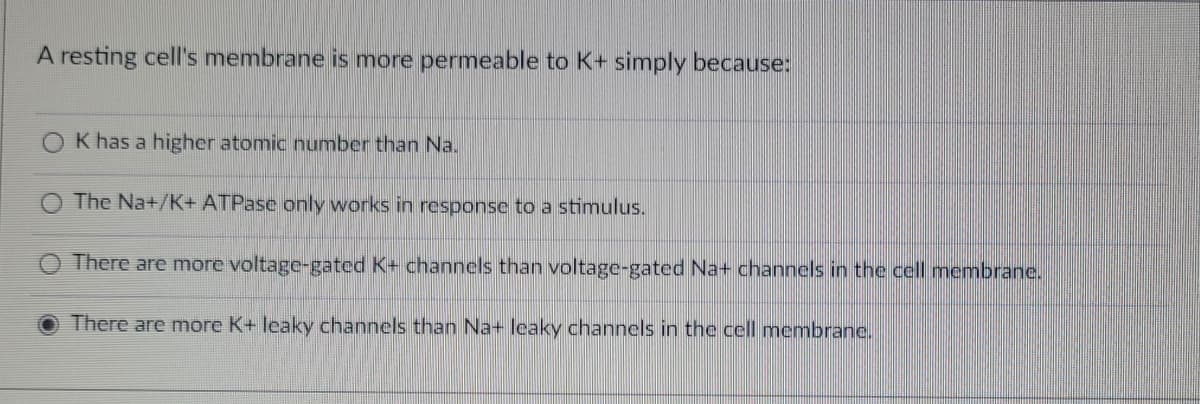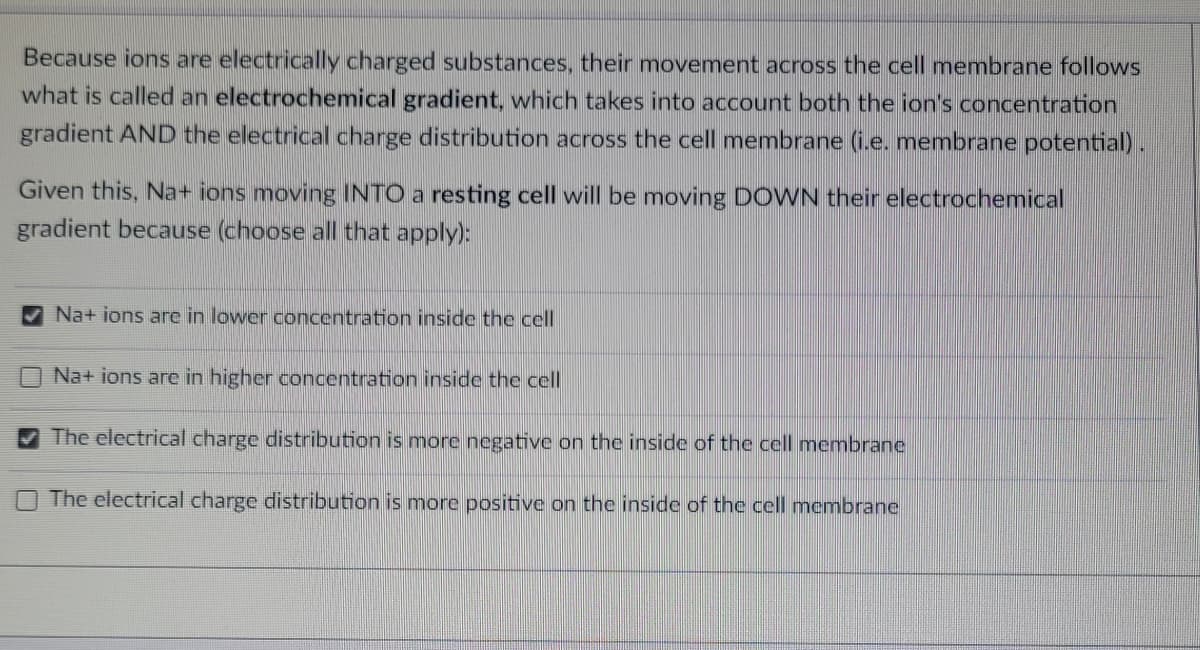A resting cell's membrane is more permeable to K+ simply because: K has a higher atomic number than Na. The Na+/K+ ATPase only works in response to a stimulus. There are more voltage-gated K+ channels than voltage-gated Na+ channels in the cell membrane. There are more K+ leaky channels than Na+ leaky channels in the cell membrane.
A resting cell's membrane is more permeable to K+ simply because: K has a higher atomic number than Na. The Na+/K+ ATPase only works in response to a stimulus. There are more voltage-gated K+ channels than voltage-gated Na+ channels in the cell membrane. There are more K+ leaky channels than Na+ leaky channels in the cell membrane.
Human Physiology: From Cells to Systems (MindTap Course List)
9th Edition
ISBN:9781285866932
Author:Lauralee Sherwood
Publisher:Lauralee Sherwood
Chapter4: Principles Of Neural And Hormonal Communication
Section: Chapter Questions
Problem 10RE
Related questions
Question

Transcribed Image Text:A resting cell's membrane is more permeable to K+ simply because:
K has a higher atomic number than Na.
The Na+/K+ ATPase only works in response to a stimulus.
There are more voltage-gated K+ channels than voltage-gated Na+ channels in the cell membrane.
There are more K+ leaky channels than Na+ leaky channels in the cell membrane.

Transcribed Image Text:Because ions are electrically charged substances, their movement across the cell membrane follows
what is called an electrochemical gradient, which takes into account both the ion's concentration
gradient AND the electrical charge distribution across the cell membrane (i.e. membrane potential).
Given this, Na+ ions moving INTO a resting cell will be moving DOWN their electrochemical
gradient because (choose all that apply):
Na+ ions are in lower concentration inside the cell
Na+ ions are in higher concentration inside the cell
The electrical charge distribution is more negative on the inside of the cell membrane
The electrical charge distribution is more positive on the inside of the cell membrane
Expert Solution
This question has been solved!
Explore an expertly crafted, step-by-step solution for a thorough understanding of key concepts.
This is a popular solution!
Trending now
This is a popular solution!
Step by step
Solved in 2 steps with 5 images

Knowledge Booster
Learn more about
Need a deep-dive on the concept behind this application? Look no further. Learn more about this topic, biology and related others by exploring similar questions and additional content below.Recommended textbooks for you

Human Physiology: From Cells to Systems (MindTap …
Biology
ISBN:
9781285866932
Author:
Lauralee Sherwood
Publisher:
Cengage Learning


Human Physiology: From Cells to Systems (MindTap …
Biology
ISBN:
9781285866932
Author:
Lauralee Sherwood
Publisher:
Cengage Learning
